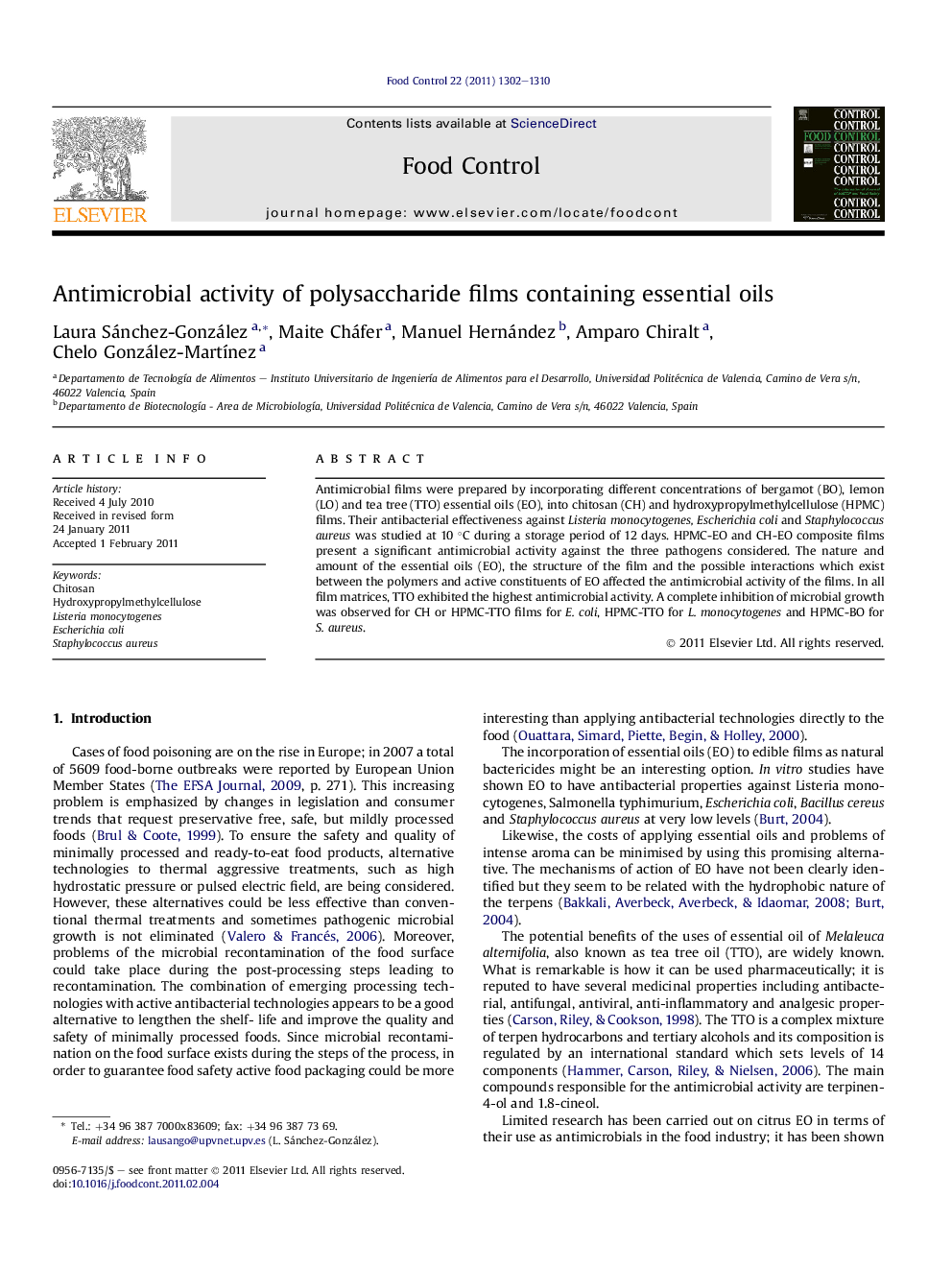| Article ID | Journal | Published Year | Pages | File Type |
|---|---|---|---|---|
| 6394547 | Food Control | 2011 | 9 Pages |
Abstract
Antimicrobial films were prepared by incorporating different concentrations of bergamot (BO), lemon (LO) and tea tree (TTO) essential oils (EO), into chitosan (CH) and hydroxypropylmethylcellulose (HPMC) films. Their antibacterial effectiveness against Listeria monocytogenes, Escherichia coli and Staphylococcus aureus was studied at 10 °C during a storage period of 12 days. HPMC-EO and CH-EO composite films present a significant antimicrobial activity against the three pathogens considered. The nature and amount of the essential oils (EO), the structure of the film and the possible interactions which exist between the polymers and active constituents of EO affected the antimicrobial activity of the films. In all film matrices, TTO exhibited the highest antimicrobial activity. A complete inhibition of microbial growth was observed for CH or HPMC-TTO films for E. coli, HPMC-TTO for L. monocytogenes and HPMC-BO for S. aureus.
Keywords
Related Topics
Life Sciences
Agricultural and Biological Sciences
Food Science
Authors
Laura Sánchez-González, Maite Cháfer, Manuel Hernández, Amparo Chiralt, Chelo González-MartÃnez,
